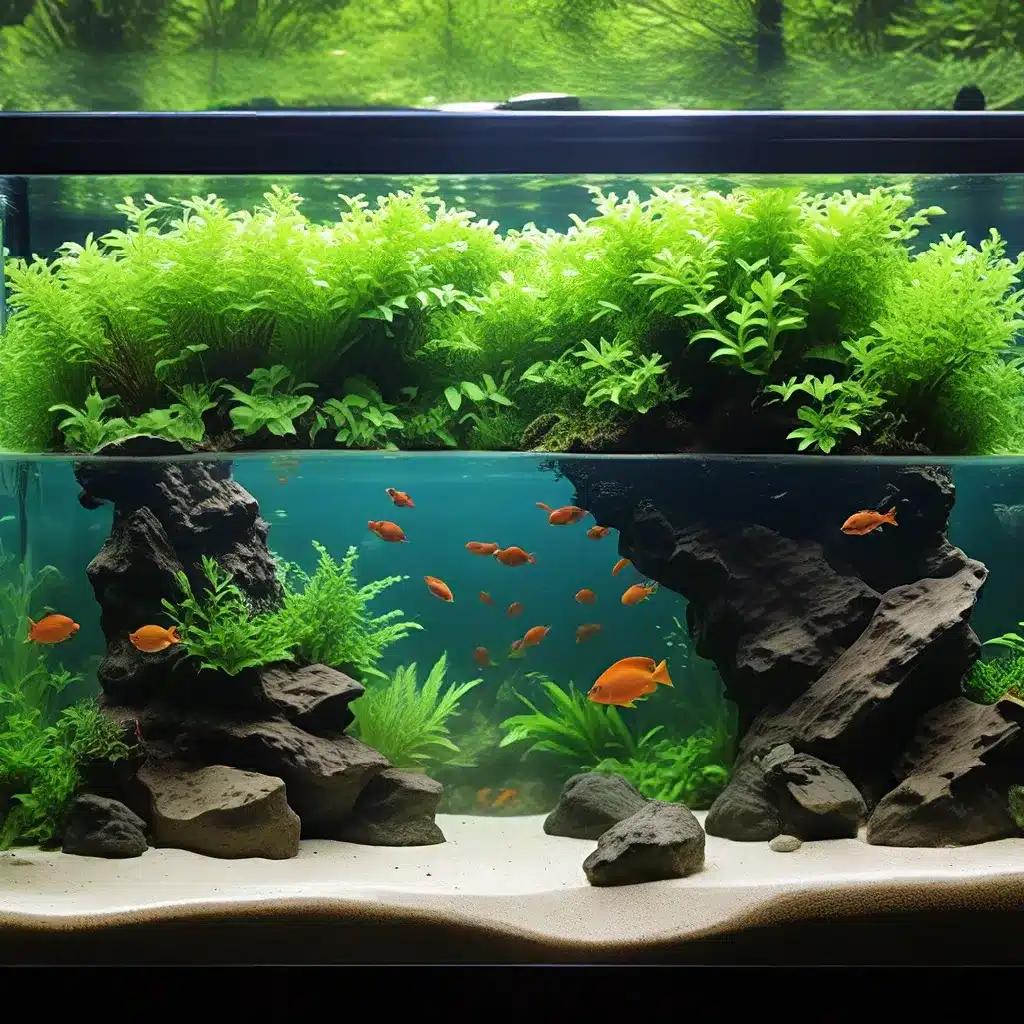
Embracing Eco-Friendly Aquarium Maintenance
As passionate aquarium enthusiasts, we have a responsibility to ensure our beloved hobby is sustainable and environmentally conscious. The health and well-being of our aquatic ecosystems are paramount, not just for the fish and plants we keep, but for the broader impact on the natural world. In this comprehensive guide, we’ll explore practical, eco-friendly strategies to reduce your aquarium’s environmental footprint while maintaining a thriving, visually stunning underwater oasis.
Sustainable Aquascaping Techniques
The art of aquascaping is not just about creating visually captivating designs; it’s also about minimizing our impact on the environment. One of the key principles of sustainable aquascaping is the use of native, locally-sourced plants. By selecting species that are naturally adapted to your regional climate and water conditions, you can significantly reduce the need for energy-intensive heating, cooling, or filtration systems.
Another important consideration is the choice of substrate. Opt for natural, eco-friendly substrates such as river pebbles, aquarium sand, or even recycled glass. These materials not only contribute to the aesthetics of your aquarium but also help to maintain a healthy, balanced ecosystem.
When introducing new fish species, be mindful of their compatibility with your local environment. Invasive species can disrupt delicate ecological balances, leading to harmful consequences for native flora and fauna. Instead, choose indigenous fish species that are well-suited to your aquarium’s conditions, ensuring a harmonious and sustainable underwater community.
Water Conservation and Efficient Filtration
Water management is a crucial aspect of aquarium care, and eco-friendly practices can make a significant difference. Implement strategies to minimize water usage, such as regularly performing partial water changes instead of full tank drains. This not only conserves water resources but also helps to maintain the optimal water chemistry for your aquatic inhabitants.
When it comes to filtration, explore energy-efficient options that promote long-term sustainability. Invest in high-quality filters that use low-wattage motors and minimize energy consumption. Additionally, consider incorporating natural filtration methods, such as live plants or biological media, which can effectively remove waste and maintain water quality without relying on energy-intensive mechanical systems.
Introducing Otocinclus catfish is a great way to enhance your aquarium’s natural filtration, as these hardy algae-eaters help to maintain a clean, balanced ecosystem.
Sustainable Waste Management
Responsible waste disposal is essential for reducing the environmental impact of your aquarium. Implement a comprehensive recycling program for aquarium equipment, such as glass, plastic, and metal components. When it comes to organic waste, consider composting fish waste or donating excess plants to local aquarium clubs or conservation organizations.
AZA-accredited zoos and aquariums serve as excellent examples of sustainable waste management practices, often implementing innovative techniques to minimize their environmental footprint.
Energy-Efficient Aquarium Lighting
Lighting is a crucial aspect of aquarium design, and eco-friendly lighting solutions can have a significant impact on your energy consumption and carbon footprint. Explore LED lighting systems, which are known for their high efficiency, long lifespan, and low energy usage. These modern lighting options not only contribute to the visual appeal of your aquarium but also help to reduce your overall energy costs and environmental impact.
Additionally, consider incorporating natural lighting by strategically positioning your aquarium near windows or skylights. This allows you to supplement your artificial lighting with sunlight, further reducing your energy demands and promoting a more natural, balanced ecosystem.
Sustainable Aquarium Equipment and Accessories
When selecting aquarium equipment and accessories, prioritize products that are eco-friendly and durable. Look for energy-efficient pumps, heaters, and other devices that minimize energy consumption and reduce your carbon footprint. Additionally, invest in high-quality, long-lasting equipment that will reduce the need for frequent replacements and the associated waste.
King Aquarium offers a wide range of sustainable aquarium products, including energy-efficient LED lighting, advanced filtration systems, and eco-friendly substrates. By choosing these responsible options, you can support businesses that prioritize environmental stewardship and contribute to the overall health of our aquatic ecosystems.
Promoting Eco-Awareness and Education
As aquarium enthusiasts, we have a unique opportunity to inspire and educate others about the importance of sustainable aquarium practices. Share your experiences and insights with fellow hobbyists, encourage them to adopt eco-friendly strategies, and participate in community initiatives that promote environmental conservation.
By leading by example and fostering a culture of sustainability within the aquarium community, we can collective make a significant impact on the long-term health and resilience of our aquatic environments.
Remember, every small step toward sustainability counts. By incorporating these eco-friendly aquarium practices into your routine, you can reduce your aquatic footprint and contribute to the preservation of our precious aquatic ecosystems. Together, let’s create a thriving, sustainable future for our aquarium communities and the natural world they represent.

